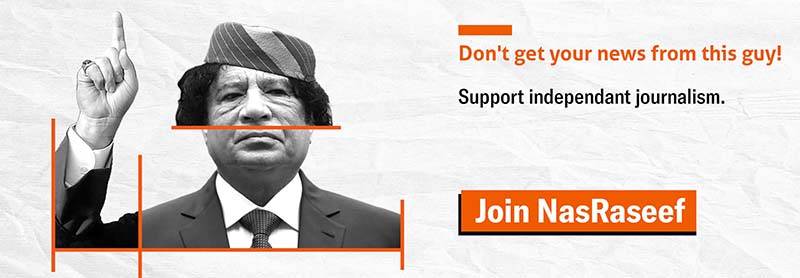 Sednaya-prison The organization confirmed that this enormous number of people were killed after they were taken from their cells in groups of fifty to one of the basement rooms, where they were hanged in secrecy. The death of each person by hanging took between one and three minutes. [h2]‘The Party’[/h2] The authorities referred to these mass hangings as “the party”. These “parties” were held on a weekly basis, at times even twice a week, over a period of five years. The corpses were later moved to Tishreen Hospital, where they were registered. They were then buried in mass graves in land owned by the military in a small village called Najha on the road between Damascus and Sweida, and in another small town called Qatana, in the western suburbs of Damascus. Amnesty further noted that the majority of the people killed were civilians who are believed to be members of the opposition. The prison is made up of two detention centers, holding between 10,000 and 20,000 people, the majority of whom were arrested after 2011. The majority of the detainees in the red building were civilians, while the white buildings primarily held former officers and soldiers in the Syrian army. In its report, Amnesty interviewed eighty-four witnesses, including former guards, prisoners, lawyers, and judges. [h2]Awaiting Torture[/h2] Maher Esber, a young Syrian man, was detained near the end of 2005, on the basis of establishing the “Youth Collective for Syria”, primarily concerned with democracy, freedom, and human rights. He launched a blog with his friends, named “Identity”, covering a range of issues related to the political opposition movement. He was tried at the Supreme State Security Court, and sentenced on charges of attempting to overturn the political regime. He was later moved to Saydnaya Military Prison, and was released in 2011 as part of a presidential pardon. “When a person is being tortured, their screams are frightening, almost inhuman,” Esber tells Raseef22, describing the six years he spent behind bars in Saydnaya. During that time, he witnessed the death of one of his cellmates from torture, after one of the prison wards struck him on the head with a sharp object. “Shortly after one of the people was killed, I was moved to the solitary confinement cell in which he was killed. In there, I found a letter he had written to this daughter for her fourth birthday. He had even designed a toy for her, thinking that he would be reunited with her again,” Esber says, singling this out as his most difficult moment in detention. Syrian President Bashar Al-Assad has previously denied on several occasions the existence of political prisoners in Syrian prisons, most recently during an interview with the New York Times, in which he confirmed that all prisoners are subject to legal treatment. [h2]A Child’s Memory[/h2] Hossam al-Qatalbi is the child of two political prisoners. He was eight months old when his father was imprisoned for thirteen years, during which he passed from the prisons of Aleppo and Kafr Sousa, to Tadmur and Saydnaya, on charges of belonging to the Communist Labour Party. As for his mother, she was imprisoned when he was one and a half years old, and was prosecuted between 1987 and 2000 for the same reason. He confirms that he has friends who were born in prison because their mothers were pregnant when they were arrested on charges of belonging to the same party. They did not leave prison until their children were three years old. Al-Qatalbi tells Raseef22 that he would visit his father in Saydnaya for just fifteen minutes at a time, once every two months, between 1987 and 1993, and only when he received permission from the military police. During his visits, there would be lines upon lines of people hudled and waiting to see their loved ones and exchange news. The prisoners of the 1980s who belonged to the Communist Labour Party had the blessing of family visitations; as for the revolutionary detainees [after 2011], it was impossible to visit them or learn of any news about them until this moment,” he notes. Al-Qatalbi is now working in the field of documenting violations, stating that he believes “in justice, and that the oppression that we were subjected to will be accounted for one day.” [h2]‘Just Like a Newborn Infant’[/h2] Abu Dahan never received an official charge, and so was included in the amnesty following the death of Hafez Al-Assad in 2000. He published a book in 2012, titled Returning from Hell, recalling his experience in prison. When he returned to his family, he needed two years to be able to rebuild his life into a semblance of normalcy. “When you return from an experience like this, you go back with a damaged mind, and so you need to relearn everything from point zero, just like a newborn infant,” he tells Raseef22. “My wife and children embraced me and raised me again, and today, I am sixteen years, one month, and one day old”—that is, the time since he was released from prison.
Sednaya-prison The organization confirmed that this enormous number of people were killed after they were taken from their cells in groups of fifty to one of the basement rooms, where they were hanged in secrecy. The death of each person by hanging took between one and three minutes. [h2]‘The Party’[/h2] The authorities referred to these mass hangings as “the party”. These “parties” were held on a weekly basis, at times even twice a week, over a period of five years. The corpses were later moved to Tishreen Hospital, where they were registered. They were then buried in mass graves in land owned by the military in a small village called Najha on the road between Damascus and Sweida, and in another small town called Qatana, in the western suburbs of Damascus. Amnesty further noted that the majority of the people killed were civilians who are believed to be members of the opposition. The prison is made up of two detention centers, holding between 10,000 and 20,000 people, the majority of whom were arrested after 2011. The majority of the detainees in the red building were civilians, while the white buildings primarily held former officers and soldiers in the Syrian army. In its report, Amnesty interviewed eighty-four witnesses, including former guards, prisoners, lawyers, and judges. [h2]Awaiting Torture[/h2] Maher Esber, a young Syrian man, was detained near the end of 2005, on the basis of establishing the “Youth Collective for Syria”, primarily concerned with democracy, freedom, and human rights. He launched a blog with his friends, named “Identity”, covering a range of issues related to the political opposition movement. He was tried at the Supreme State Security Court, and sentenced on charges of attempting to overturn the political regime. He was later moved to Saydnaya Military Prison, and was released in 2011 as part of a presidential pardon. “When a person is being tortured, their screams are frightening, almost inhuman,” Esber tells Raseef22, describing the six years he spent behind bars in Saydnaya. During that time, he witnessed the death of one of his cellmates from torture, after one of the prison wards struck him on the head with a sharp object. “Shortly after one of the people was killed, I was moved to the solitary confinement cell in which he was killed. In there, I found a letter he had written to this daughter for her fourth birthday. He had even designed a toy for her, thinking that he would be reunited with her again,” Esber says, singling this out as his most difficult moment in detention. Syrian President Bashar Al-Assad has previously denied on several occasions the existence of political prisoners in Syrian prisons, most recently during an interview with the New York Times, in which he confirmed that all prisoners are subject to legal treatment. [h2]A Child’s Memory[/h2] Hossam al-Qatalbi is the child of two political prisoners. He was eight months old when his father was imprisoned for thirteen years, during which he passed from the prisons of Aleppo and Kafr Sousa, to Tadmur and Saydnaya, on charges of belonging to the Communist Labour Party. As for his mother, she was imprisoned when he was one and a half years old, and was prosecuted between 1987 and 2000 for the same reason. He confirms that he has friends who were born in prison because their mothers were pregnant when they were arrested on charges of belonging to the same party. They did not leave prison until their children were three years old. Al-Qatalbi tells Raseef22 that he would visit his father in Saydnaya for just fifteen minutes at a time, once every two months, between 1987 and 1993, and only when he received permission from the military police. During his visits, there would be lines upon lines of people hudled and waiting to see their loved ones and exchange news. The prisoners of the 1980s who belonged to the Communist Labour Party had the blessing of family visitations; as for the revolutionary detainees [after 2011], it was impossible to visit them or learn of any news about them until this moment,” he notes. Al-Qatalbi is now working in the field of documenting violations, stating that he believes “in justice, and that the oppression that we were subjected to will be accounted for one day.” [h2]‘Just Like a Newborn Infant’[/h2] Abu Dahan never received an official charge, and so was included in the amnesty following the death of Hafez Al-Assad in 2000. He published a book in 2012, titled Returning from Hell, recalling his experience in prison. When he returned to his family, he needed two years to be able to rebuild his life into a semblance of normalcy. “When you return from an experience like this, you go back with a damaged mind, and so you need to relearn everything from point zero, just like a newborn infant,” he tells Raseef22. “My wife and children embraced me and raised me again, and today, I am sixteen years, one month, and one day old”—that is, the time since he was released from prison.Raseef22 is a not for profit entity. Our focus is on quality journalism. Every contribution to the NasRaseef membership goes directly towards journalism production. We stand independent, not accepting corporate sponsorships, sponsored content or political funding.
Support our mission to keep Raseef22 available to all readers by clicking here!




Join the Conversation
جيسيكا ملو فالنتاين -
3 hours agoجميل جدا أن تقدر كل المشاعر لأنها جميعا مهمة. شكرا على هذا المقال المشبع بالعواطف. احببت جدا خط...
Tayma Shrit -
1 day agoمدينتي التي فارقتها منذ أكثر من 10 سنين، مختلفة وغريبة جداً عمّا كانت سابقاً، للأسف.
Anonymous user -
1 day agoفوزي رياض الشاذلي: هل هناك موقع إلكتروني أو صحيفة أو مجلة في الدول العربية لا تتطرق فيها يوميا...
Anonymous user -
1 day agoاهم نتيجة للرد الايراني الذي أعلنه قبل ساعات قبل حدوثه ، والذي كان لاينوي فيه احداث أضرار...
Samah Al Jundi-Pfaff -
3 days agoأرسل لك بعضا من الألفة من مدينة ألمانية صغيرة... تابعي الكتابة ونشر الألفة
Samah Al Jundi-Pfaff -
3 days agoاللاذقية وأسرارها وقصصها .... هل من مزيد؟ بالانتظار